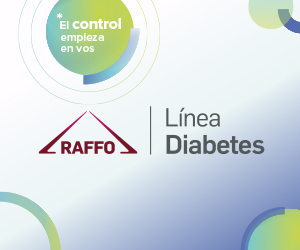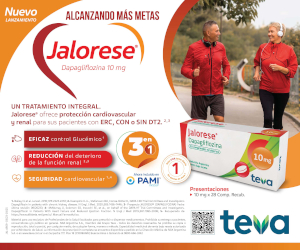P45 Survey about cardiovascular risk factors and carbohydrate metabolims alterations as a part of the International Diabetes Day
DOI:
https://doi.org/10.47196/diab.v54i3Sup.431Keywords:
cardiovascular risk factors, carbohydrate metabolims alterations, diabetesAbstract
Introduction: Diabetes is an entity that significatively increases cardiovascular morbidity and mortality. According to data from the 4th National Survey of Risk Factors (4ta Encuesta Nacional de Factores de Riesgo - ENFR), high glycemia prevalence or diabetes went from 9.8% in 2013 to 12.7% in 2018, with obesity as one of the main associated risk factors, whose prevalence increased more than 70% in the last 15 years. According to the International Diabetes Federation (IDF), it is foreseen that at least 578 million people will have diabetes by 2030.
Objectives: To describe the data found through a survey about cardiovascular risk factors detection and carbohydrate metabolism alterations, as a part of the international diabetes day on the 14th of November 2019.
Materials and Methods: Cross-sectional descriptive study from data collected during the campaign held on November 14th of 2019 in an institution of Buenos Aires, which was interdisciplinary and was held with medical staff of the diabetes service, infirmary staff, and the nutrition service students. This campaign consisted on inviting outpatient subjects who were nearby the medical center to participate. Therefore, after giving their verbal consent they were asked to do the following: 1) complete a survey about habits, diabetes history, arterial hypertension (AHT), cardiovascular disease (CVD), renal disease (RD); 2) anthropometric measures were taken (weight, height, waist circumference (WC); 3) capillary blood glucose was read with a refractometer. In order to do this report, the subjects who went through the procedures listed in 1) and 2) were considered. The categorical variables are described as percentages, whereas the quantitative ones are read as median /interquartile range, according to data distribution.
Results: From a total of 267 participants, 143 fit the inclusion criteria, of which 63,6% were women, with an average age of 55 years old. The prevalence of self-reported diabetes was of 11,2%, while a 34,3% reported AHT, a 10,5% CVD, a 2,1% RD and a 30,1% said not to know about these antecedents. The frequency of some reported modifiable risk factors is described in Table 1. The prevalence of overweight/obesity (OW/OB) was of 84%, from which 60,8% were women. The average of WC was of 95.3 cm (86-104) in women and 104.3 cm (93.5-113.8) in men. In respect to the capillary glycemia figures, those individuals who did not report diabetes history presented a glycemia average of 101 mg/dl (92–112).
Conclusions: In our cohort, taking the data of the 4th ENFR as a reference, the rate of diabetes, OW/OB were superior, whereas, AHT and CVD were reported less frequently. Furthermore, almost one third of the participants reported sedentariness and one of every ten individuals admitted a smoking habit. Nevertheless, due to the data source dynamic there can be some selection bias. Still, considering the vicious circle between diabetes, OW/OB and CVD, and the importance of implementing healthy habits and lifestyle to prevent them, the data collected is alarming. Hence, it is emphasized that in order to prevent these chronic, non-communicable diseases, there is a constant necessity of programs and opportune intensive policy measures that allow effective multi-disciplinary and massive intervention.
Downloads
Published
How to Cite
Issue
Section
License

This work is licensed under a Creative Commons Attribution-NonCommercial-NoDerivatives 4.0 International License.
Dirección Nacional de Derecho de Autor, Exp. N° 5.333.129. Instituto Nacional de la Propiedad Industrial, Marca «Revista de la Sociedad Argentina de Diabetes - Asociación Civil» N° de concesión 2.605.405 y N° de disposición 1.404/13.
La Revista de la SAD está licenciada bajo Licencia Creative Commons Atribución – No Comercial – Sin Obra Derivada 4.0 Internacional.
Por otra parte, la Revista SAD permite que los autores mantengan los derechos de autor sin restricciones.


































